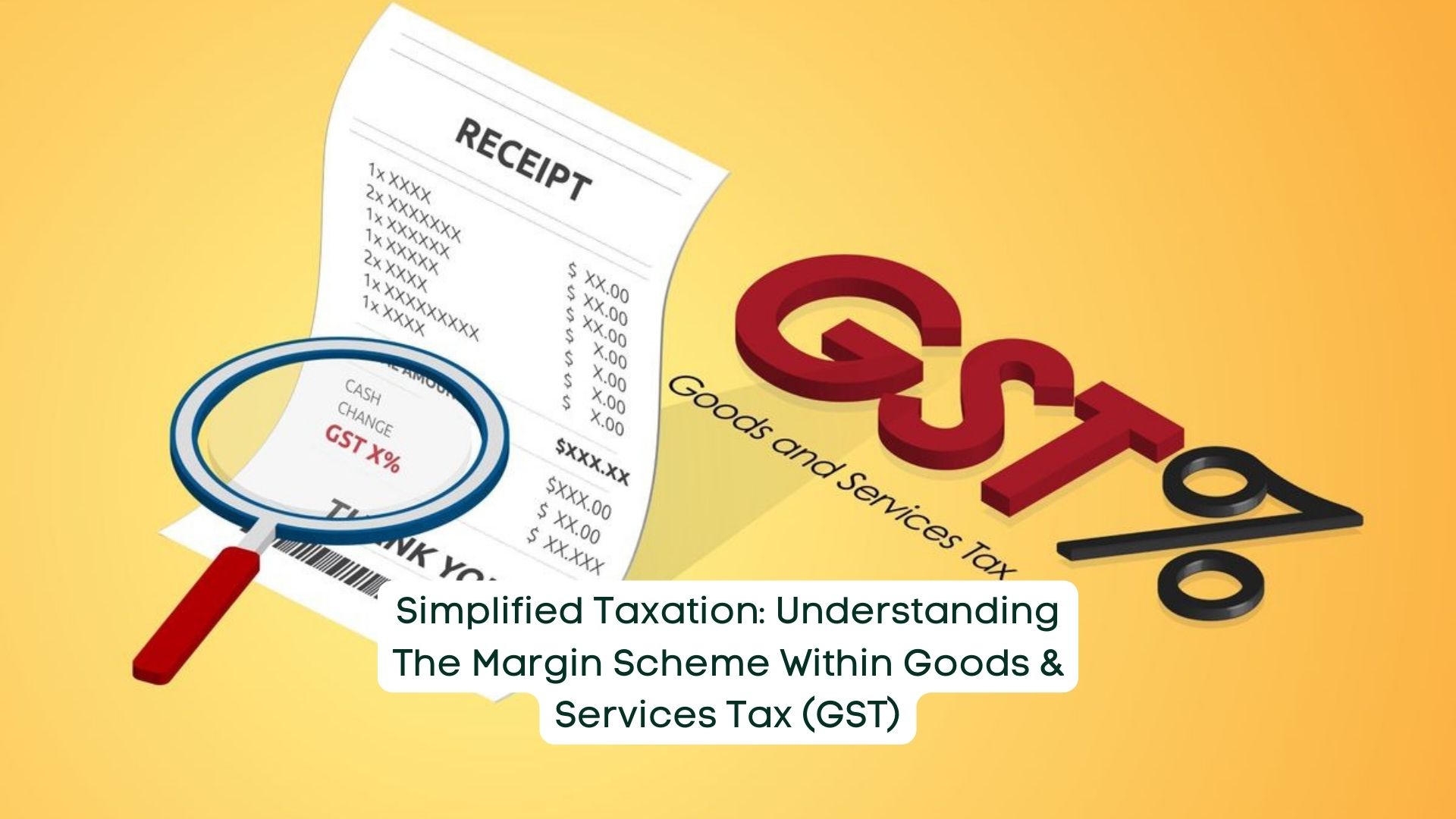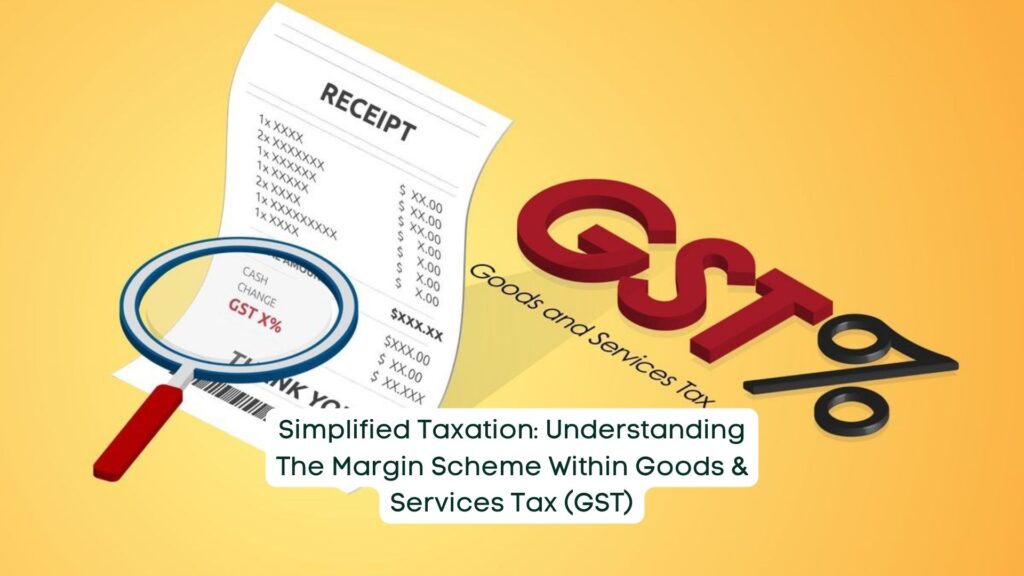
23 Feb Simplified Taxation: Understanding the Margin Scheme within Goods & Services Tax (GST)

India initiated the Goods and Services Tax (GST) on 1st July 2017, aiming to streamline the taxation process. Among the various tax schemes introduced under GST, the Margin Scheme stood out. Let’s delve into its intricacies.
Overview of the Margin Scheme
The Margin Scheme within GST aimed to prevent double taxation on goods already taxed. It allowed sellers to calculate GST based on the margin, i.e., the variance between the selling price of goods and the price received from customers.
Key Objective
The primary goal of the Margin Scheme was to ensure that only the margin, not the entire value, was subject to taxation, thus avoiding double taxation on used goods. For instance, if a buyer purchased a second-hand car for ₹3 lakhs and sold it for ₹3.8 lakhs, the GST applied only to the margin of ₹80,000.
Implementation and Guidelines
Under the Margin Scheme, sellers dealing in second-hand goods could not claim input tax credits. Additionally, the nature of the goods had to remain unchanged after processing. Valuation under this scheme was calculated by subtracting the purchase price from the selling price.
Tax Rates and Exemptions
The tax rate under the Margin Scheme was typically equivalent to that levied on new goods. However, specific concessions might have applied, such as reduced rates for certain categories like motor vehicles. For instance, used cars were taxed at 12% or 18% based on their size.
Addressing Challenges
Challenges related to Input Tax Credit (ITC) and GST inclusion persisted. Dealers had to consider repair costs for margin calculations. Furthermore, clarity was needed on whether GST on margins could be included in the sale price collected from customers.
Conclusion
The Margin Scheme under GST aimed to prevent double taxation on second-hand goods, ensuring that goods taxed once did not face additional taxation upon resale. By taxing only the margin, GST simplified the tax burden on used goods transactions while aligning with the broader objective of GST implementation.


No Comments